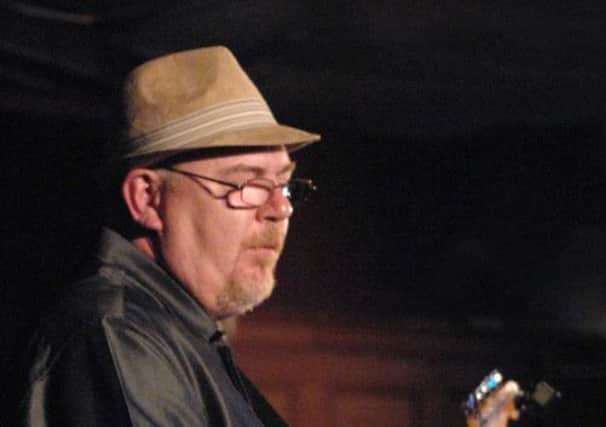Obituary: Stevey Hay, musician


Blues guitarist and singer Stevey Hay died suddenly in Edinburgh on the night of Wednesday, 4 July at the age of 51. Born in Edinburgh on 5 November, 1962, Mr Hay was the oldest of four children, with a sister and two brothers. He attended Craigroyston High School, Edinburgh, graduating in 1978.
Intrigued by the guitar, and inspired by his parents’ Johnny Cash records, Stevey was a self-taught musician, experimenting with his father’s guitar, which he was not supposed to touch. It was his dad who eventually bought him his first instrument.
Advertisement
Hide AdAdvertisement
Hide AdHe joined local band The Exploited as a teenager, riding the punk explosion into the indie charts in 1980 with the song Army Life – co-written by “Hay Boy” (as he was known to the band), but never credited, as he omitted to sign the necessary documentation.
Following a UK tour, hospitalised with a leg injury, Stevey was replaced in The Exploited by Big John Duncan, leaving him free to pursue a burgeoning interest in blues music.
On the recommendation of local guitar hero John Bruce of Edinburgh band Blues’ n’ Trouble, he anatomised the playing of BB King on his Live At The Regal album, widely regarded as one of the all time great blues recordings, and then found further inspiration in the work of Texas blues guitar prodigy Stevey Ray Vaughan.
Edinburgh in the 1980s and early 1990s was host to a vibrant live music circuit, and Stevey was able to work up to six or seven nights a week – plus weekend afternoons.
Blues music underwent something of a renaissance in the 1980s, and in 1987 local band Mr Rhythm, with Stevey on guitar, secured a major concert hall appearance in support to one of the architects of the revival, Robert Cray, at Edinburgh’s Usher Hall.
A gifted instrumentalist, Stevey took to singing with reluctance, initially as a stop gap to cover a full date sheet when a vocalist quit the band unexpectedly. Ever diffident with regard to his talents, it took a compliment from the deacon of Scottish blues, Tam White, and the continued encouragement of Ronnie “Rootsie” Tait, a masterful singer and front man in his own right, to persuade him to persist.
As his confidence grew, Stevey’s warm, unforced vocal style allowed him to intertwine the delivery of a lyric with a stingingly apposite guitar commentary. He never forgot that the artist should serve the song, rather than the reverse.
A player of limitless fluency and invention, Stevey invested his music with the powerful emotional punch that characterises the great blues artists. An uncannily accurate mimic, he could replicate the sound and musical vocabulary of any number of influential guitarists, almost as quickly as he could recreate both sides of a recent telephone conversation, to entertaining effect.
Advertisement
Hide AdAdvertisement
Hide AdHe was, crucially, as gifted a rhythm player as a soloist, and frequently worked in bands with a twin guitar front line, including Texas Breakfast with Sandy Tweeddale in the late 1980s, Blues Inc with Danny Lazarski from 1998 to 2003, and most recently, Stevey Hay’s Shades Of Blue, with Neil Warden.
By contrast, he toured as sole accompanist to American blues singer and harmonica ace Charlie Musselwhite, forging an enduring friendship; as duo partner to Edinburgh legend, singer and harmonica player Ronnie Tait, and from 2003 to 2008 fronted his own hard-working band, Stevey Hay & the RayVons – a trio, later adding keyboards to form a quartet. He also played with, among others, the Deaf Heights Cajun Aces, and Rockabilly outfit Shake Rag, for whom he wrote his signature tune, Shake Rag Boogie.
Stevey was never a player to lean on technique for its own sake, although it was certainly at his fingertips if required. He could transfix an audience with an explosion of emotive pyrotechnics, or simply break your heart with three expressive notes.
Whether in a concert hall or at a low-key jam night, he would often inspire his accompanying musicians to performances of which they might not previously have considered themselves capable.
He was the Big Man in many senses. A commanding presence, warm, humorous and convivial, Stevey took his music seriously, but not necessarily as a career choice – sometimes to the frustration of his fellow band members.
In recent years he worked as janitor at the Muirhouse Millennium Centre, and generally seemed happiest performing in local venues, joking and jamming with friends and musical colleagues in private, or enjoying home life with his family. It is possible that his most steadfast fans were other musicians.
Stevey’s latest ensemble, Shades Of Blue, incorporating former Tam White Band personnel Neil Warden, Paul Manson and Dave Swanson, plus jazz saxophonist John Burgess, with cameos from renowned jazz pianist Brian Kellock and dynamic young singer Leona Rae, offered an opportunity to take his music in a new direction.
Following a promising album release in 2012, and ensuing live dates, it is our loss that this project will never be fully developed.
Advertisement
Hide AdAdvertisement
Hide AdA natural communicator, both in conversation and through his music, and generous with his time, talent, and spirit, Stevey Hay was a man warmly respected and loved by his peers, and an inspiration to a younger generation of Edinburgh musicians. We are all privileged to have known him.
A proud father and family man, Stevey is survived by his wife Louise, daughter Jasmine, and sons Steven and James.
ROD KENNARD